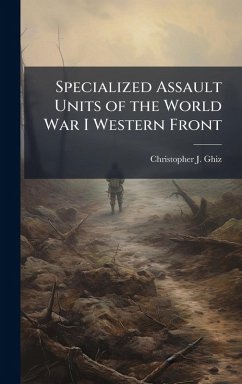This thesis will use a comparative study of the German Storm trooper battalions and the Canadian trench raiders in order to examine the dynamics of the World War I battlefield, the role of military culture in adaptation in order to acknowledge and act on the requirements of battlefield innovation. The purpose is to determine what key factors contributed to the tactical effectiveness of specialized assault units on the Western Front. The military cultures of these armies comprised the logical and innovative principles that were fundamental in the tactical effectiveness of these elite assault units by making revolutionary developments in force structure, institutional support, personnel selection, decentralized leadership, and training on small-unit tactics and advanced weaponry. Did these tactics create similar or different effects for each army? What factors did these armies use to organize and employ these assault units? To answer these questions, several areas will be examined: (1) force structure, (2) institutional support, (3) personnel selection, and (4) training on decentralized leadership, small unit infiltration tactics, and advanced weaponry. Both armies had different backgrounds and situations. The German Army's Sturm battalions represented an army-wide institutionalization of organization, selection and technique. The Canadian Corps' trench raiders were based on the Canadian Corps' homogeneous structure that separated itself from the BEF in developing its own doctrine, training schools, organization, and tactical innovations. This work has been selected by scholars as being culturally important, and is part of the knowledge base of civilization as we know it. This work was reproduced from the original artifact, and remains as true to the original work as possible. Therefore, you will see the original copyright references, library stamps (as most of these works have been housed in our most important libraries around the world), and other notations in the work. This work is in the public domain in the United States of America, and possibly other nations. Within the United States, you may freely copy and distribute this work, as no entity (individual or corporate) has a copyright on the body of the work. As a reproduction of a historical artifact, this work may contain missing or blurred pages, poor pictures, errant marks, etc. Scholars believe, and we concur, that this work is important enough to be preserved, reproduced, and made generally available to the public. We appreciate your support of the preservation process, and thank you for being an important part of keeping this knowledge alive and relevant.
Bitte wählen Sie Ihr Anliegen aus.
Rechnungen
Retourenschein anfordern
Bestellstatus
Storno








